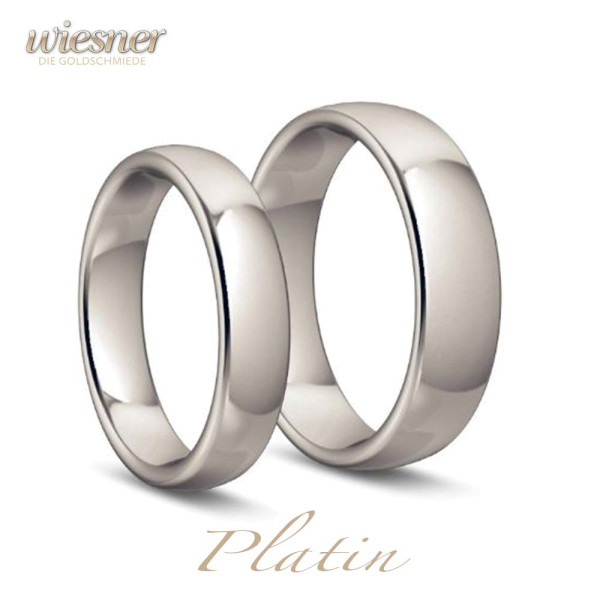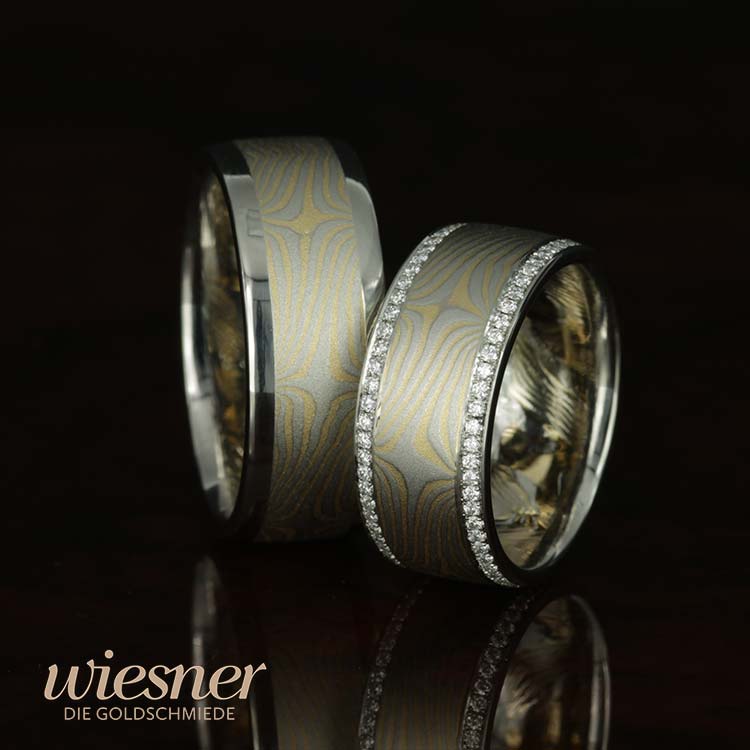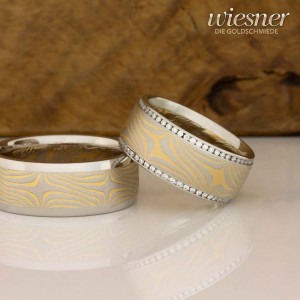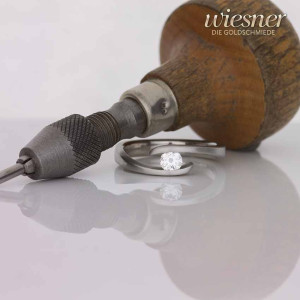Historical facts about platinum:
It must be assumed that Platinum was first used around 3000 BC. Today, metallic platinum is practically no longer mined. There are only mines in South Africa. In the production of non-ferrous metals such as copper and nickel, platinum metals are a by-product of nickel refining. There are five by-metals in the platinum group. Rhodium, osmium, iridium, palladium and ruthenium. These by-metals are so similar to platinum that they initially caused great difficulties in the extraction of pure platinum. Platinum is a corrosion-resistant, soft and malleable precious metal. It is also suitable for the production of high-quality wedding rings and engagement rings due to its high tarnish resistance, durability and rarity. We process platinum in both the Mokume Gane wedding rings Serayaas well as in our zodiac rings, but also in engagement rings.
General description of platinum:
Platinum is a rare, dense and corrosion-resistant metal that is used in the jewelry industry, electrical engineering and the automotive industry. It has a high electrical and thermal conductivity and is an important catalyst in chemistry. Platinum is a precious metal and is valued as an investment and jewelry metal. The largest deposits are found in South Africa, Russia and Canada.
What role does platinum play in the jewelry industry
In the jewelry industry, platinum is valued for its hardness, density and resistance to impurities and wear. It is a popular material for wedding rings and jewelry because it is durable and less prone to scratching than other precious metals. Platinum gives jewelry an elegant and sophisticated look and is particularly sought after because it is rare and more expensive than gold.
Example of the use of platinum in the jewelry industry. Here rings made of platinum and yellow gold.
However, the price of platinum is lower than that of gold. Why is it still more expensive?
Although the price of platinum is generally lower than the price of gold, it is still more expensive because it is rarer and more difficult to mine than gold. Platinum deposits are less common and more difficult to extract than gold deposits, which increases the cost of mining. In addition, the demand for platinum as a jewelry and investment metal is high, which also influences the price. All these factors mean that platinum is more expensive than gold, despite its lower price per ounce.
Hm, not quite conclusive. Is platinum jewelry possibly more expensive than gold jewelry due to the difficult processing?
Yes, platinum is indeed more difficult to work with than gold due to its hardness and density. This means that more time and special skills are required to make platinum jewelry. This results in a higher cost to produce platinum jewelry, which affects the final price. As platinum is rarer and harder than gold, it is also more durable and stays in good condition for longer, which many customers appreciate and are willing to pay a higher price for.
What about the specific weight of platinum? It weighs significantly more than gold for the same volume!
That is correct. The specific weight of platinum is higher than that of gold. This means that an equal amount of platinum has a higher weight than an equal amount of gold. The specific weight of platinum is 21.45 g/cm³, while that of gold is 19.3 g/cm³. Therefore, a piece of jewelry of the same size made of platinum weighs more than a piece of the same size made of gold. This is another reason why platinum jewelry can be more expensive than gold jewelry.
Why is platinum jewelry and platinum wedding rings so popular with bridal couples and jewelry enthusiasts?
Platinum jewelry and platinum wedding rings are popular with bridal couples and jewelry enthusiasts because of their hardness, density, beauty and durability.
-
Durability: Platinum is a very robust and durable metal that is less susceptible to scratches and wear than other metals. This makes it a good choice for wedding rings and jewelry that are meant to last.
-
Elegance: Platinum has a shiny, white color that looks particularly elegant and sophisticated. It gives pieces of jewelry a high-quality look and goes well with diamonds and other precious stones.
-
Rarity: Platinum is a rare and sought-after metal that is more expensive than gold. Many customers appreciate its rarity and are prepared to pay a higher price for platinum jewelry.
-
Appreciation: Platinum is a precious metal that can increase in value over time. It is a good choice for investors and collectors.
Overall, platinum offers a combination of longevity, elegance, rarity and appreciation that makes it a popular choice for wedding rings and jewelry.





